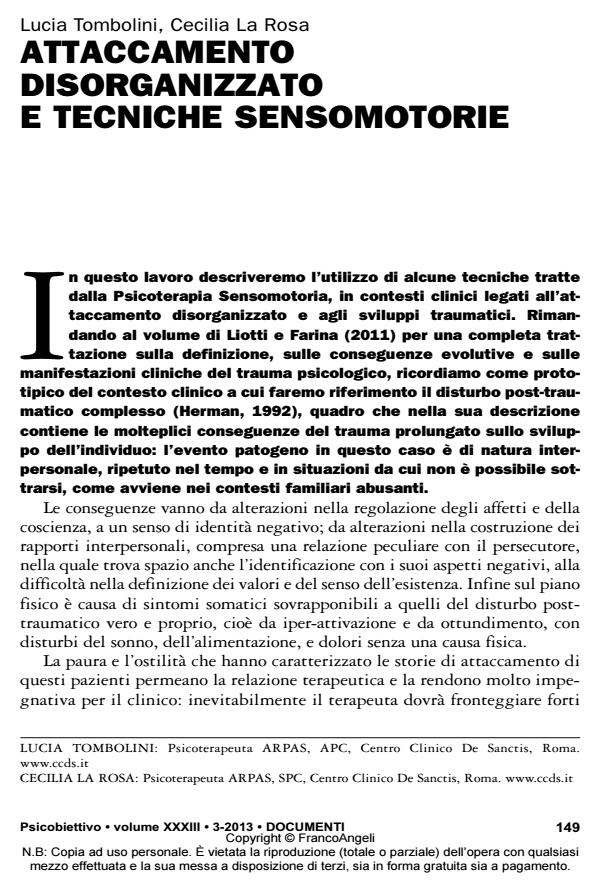Attaccamento disorganizzato e tecniche sensomotorie
Titolo Rivista PSICOBIETTIVO
Autori/Curatori Lucia Tombolini, Cecilia La Rosa
Anno di pubblicazione 2014 Fascicolo 2013/3
Lingua Italiano Numero pagine 15 P. 149-163 Dimensione file 135 KB
DOI 10.3280/PSOB2013-003010
Il DOI è il codice a barre della proprietà intellettuale: per saperne di più
clicca qui
Qui sotto puoi vedere in anteprima la prima pagina di questo articolo.
Se questo articolo ti interessa, lo puoi acquistare (e scaricare in formato pdf) seguendo le facili indicazioni per acquistare il download credit. Acquista Download Credits per scaricare questo Articolo in formato PDF

FrancoAngeli è membro della Publishers International Linking Association, Inc (PILA)associazione indipendente e non profit per facilitare (attraverso i servizi tecnologici implementati da CrossRef.org) l’accesso degli studiosi ai contenuti digitali nelle pubblicazioni professionali e scientifiche
Il trattamento dei disturbi correlati ai traumi richiede una particolare attenzione sia alla relazione terapeutica sia alle modalità di intervento sui ricordi traumatici. Nella relazione terapeutica avranno un ruolo l’intensità delle emozioni e la capacità del paziente di regolarle; per quanto riguarda le tecniche di intervento sul trauma e la loro integrazione con la psicoterapia sono necessari alcuni accorgimenti: il loro utilizzo è possibile in una fase avanzata del trattamento, tenendo presente la capacità meta cognitiva del paziente. Dopo una breve esposizione dei principi teorici della psicoterapia sensomotoria, saranno descritte alcune procedure basate sul corpo utilizzabili in un contesto terapeutico cognitivo-evoluzionista.
Parole chiave:Trauma; attaccamento disorganizzato; psicoterapia sensomotoria; sistema di difesa; relazione terapeutica.
Lucia Tombolini, Cecilia La Rosa, Attaccamento disorganizzato e tecniche sensomotorie in "PSICOBIETTIVO" 3/2013, pp 149-163, DOI: 10.3280/PSOB2013-003010